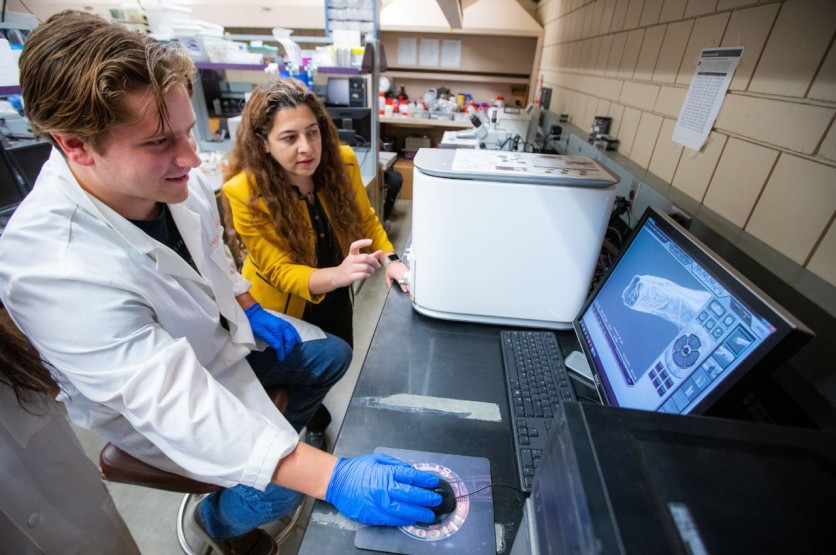Researchers have developed a groundbreaking "placenta-on-a-chip" using a thin, transparent polymer block with microchannels a millionth of a meter wide and high, separated by a porous membrane. This aims to study the transfer of medications and nutrients across the placental barrier.

Inventing Placenta-on-a-Chip
A team of researchers has developed a groundbreaking "placenta-on-a-chip" utilizing a thin, transparent polymer block with two microscopic microchannels, each a millionth of a meter wide and high, separated by a porous membrane.
The primary objective of this innovation is to assess and study the transfer of medications and nutrients across the placental barrier, both from the mother to the fetus and vice versa. Taking the model to the next level, the scientists have recently secured a grant to enhance their "placenta-on-a-chip" project.
Nicole Hashemi, the project lead and associate professor of mechanical engineering at Iowa State University, shared that they are working on incorporating sensing platforms that can be seamlessly integrated into the model.
Interesting Engineering reported that the team is currently engaged in the development of two distinct models. The first utilizes ions to observe cellular responses to mechanical or chemical stimuli, while the second incorporates "hyperspectral" imaging equipment to gauge cellular reactions to chemical stimuli.
Hyperspectral sensors, renowned for their high spectral resolution, excel in capturing intricate details about the spectral characteristics of a scene. This advanced capability allows the detection of subtle variations in the electromagnetic spectrum.
Going Beyond Its Current Applications
Beyond its current applications, Hashemi envisions the model evolving to harness a patient's cells for personalized therapy enhancement. The overarching goal, as outlined in a study overview, is to achieve higher accuracy in testing for the transport rate of specific compounds and setting safe exposure levels.
The research team led by Hashemi has demonstrated the technology's versatility through various applications. For instance, they conducted a study examining the transport of caffeine across the placental barrier.
Additionally, ongoing collaboration with the University of Nebraska College of Medicine involves analyzing nanomedicines as they traverse the placental barrier.
The researcher envisions a new prototype of the chip to be developed by the end of the third year of the grant, emphasizing a substantial focus on basic science to create two innovative sensing systems.
The ultimate goal is to introduce technology that addresses critical health concerns for both mothers and their offspring.
Also Read : [STUDY] Before Birth Genes Expression Could Lead To Depression, ADHD; Pregnancy Factors Now Investigated
Reflecting on the journey since the project's initiation in 2015, Hashemi acknowledges the team's growth from novices to pioneers in the field. She highlights the project's innovation and the significant strides made despite limited resources.
A $350,000 grant spanning three years is provided by the NSF's Partnerships for Innovation program and the Established Program to Stimulate Competitive Research. Tailored for mid-career researchers, these grants aim to significantly boost and propel their research programs and career paths.
Related Article : Researchers Studying 'Placenta On A Chip' To Gain Pregnancy Insight





